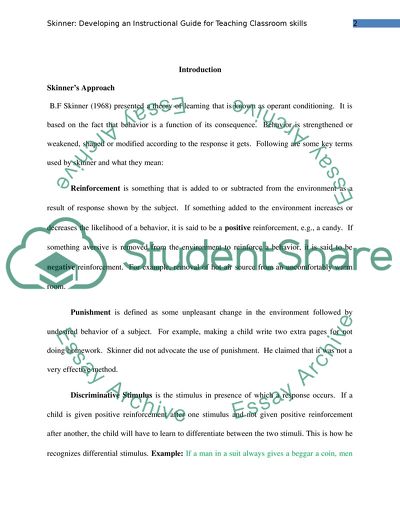Cite this document
(An Instructional Guide using Operant Conditioning Case Study Example | Topics and Well Written Essays - 1500 words, n.d.)
An Instructional Guide using Operant Conditioning Case Study Example | Topics and Well Written Essays - 1500 words. https://studentshare.org/education/1739760-skinner-developing-an-instructional-exercise-using-operant-conditioning
An Instructional Guide using Operant Conditioning Case Study Example | Topics and Well Written Essays - 1500 words. https://studentshare.org/education/1739760-skinner-developing-an-instructional-exercise-using-operant-conditioning
(An Instructional Guide Using Operant Conditioning Case Study Example | Topics and Well Written Essays - 1500 Words)
An Instructional Guide Using Operant Conditioning Case Study Example | Topics and Well Written Essays - 1500 Words. https://studentshare.org/education/1739760-skinner-developing-an-instructional-exercise-using-operant-conditioning.
An Instructional Guide Using Operant Conditioning Case Study Example | Topics and Well Written Essays - 1500 Words. https://studentshare.org/education/1739760-skinner-developing-an-instructional-exercise-using-operant-conditioning.
“An Instructional Guide Using Operant Conditioning Case Study Example | Topics and Well Written Essays - 1500 Words”. https://studentshare.org/education/1739760-skinner-developing-an-instructional-exercise-using-operant-conditioning.


